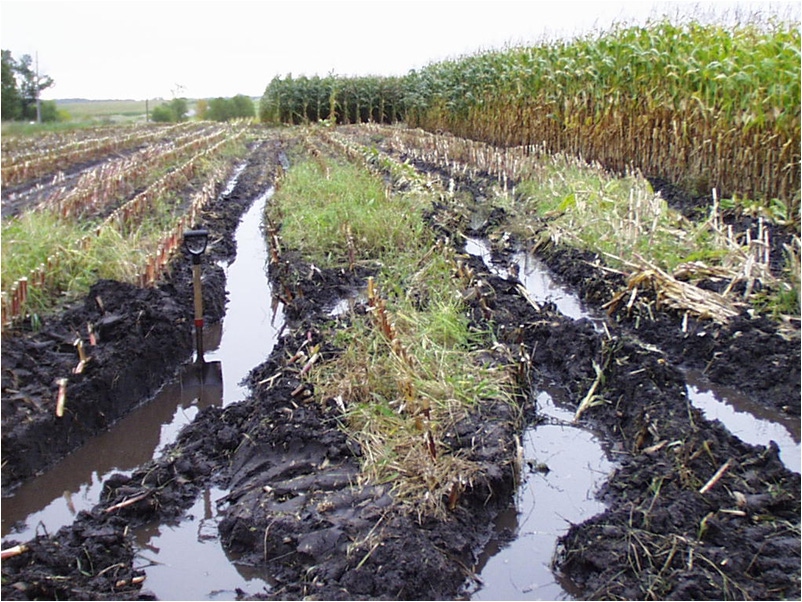
Corn and soybean harvest is in full swing but some fields are a little wet, and wetter soils compact easier. However, there are three ways to minimize the extent of the compaction you may create when driving through the field.
1. Reduce axle loads. Heavy axle loads and wet soil conditions will increase the depth of compaction. Loads greater than 10 tons/axle can compact the soil past the tillage layer. Full combines, slurry tankers, and grain carts can weigh between 20-40 tons/axle and whether equipped with tracks or tires, create compaction down to 2-3 feet. While it may be inconvenient, unload the combine on the headlands or unload more frequently to minimize compaction depth.
2. Check your tire pressure often. Not only does this help reduce soil compaction, it also improves tractor efficiency. Studies have shown that given the same axle load, inflation of the tires (psi) will determine the depth and severity of the compaction. Check with your tire manufacturer or their website for proper tire size and inflation rate for the carrying capacity of your equipment.
3. Control your traffic. The theory behind controlled traffic is that 80% of the compaction happens on the first pass, so use this to your advantage. While it may take a while to replace equipment that will use the same wheel tracks, there is one piece of equipment that should receive special attention: the grain cart. The grain cart has the highest potential to compact the soil due to the large carrying capacity and the single axle (loaded 1,200 bushel cart = 38 T/axle). Have the grain cart follow the old combine tracks and follow them out to the headlands (they are compacted already). Avoid driving at a diagonal to the entrance of the field.
For more information on reducing soil compaction potential go to:
About the Author(s)
You May Also Like






